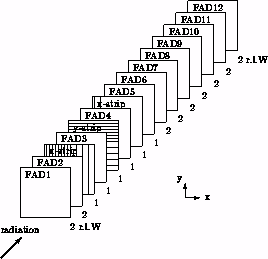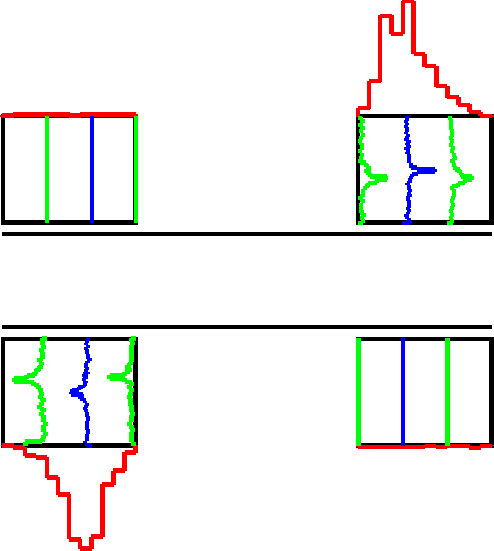| Very Small Angle Tagger (VSAT) at DELPHI |
|
The VSAT is a detector in DELPHI, located close to the beam at 7.7m from the interaction point. The physical processes being monitored are the elastic scattering of electrons and positrons, Bhabha scattering, used to determine the luminosity , and two photon collisions . The signals are amplified, and transported to electronics where they are temporarily stored until a decision is taken if it should be kept or not. The decision is formed by requiring that the energy deposited in one or more module must exceed a given threshold. The signals are digitized in case of positive decision. In order to obtain good results with small errors, are detector specific parameters, e.g. status of individual channels,continously monitored Any changes in the parameters are recorded for later usage in the analysis of the data.
People Involved
Ulf Mjörnmark 13 october 1997 |
|
|
| ©1997 Particle Physics, Lund University | ||
 The detector consists of 4 small electromagnetic
The detector consists of 4 small electromagnetic  Due to its
placement near the beam pipe and hence high counting rate, the VSAT
detector provides useful online monitoring of beam parameters and
luminosity. Information is sent to the central DELPHI monitoring
system and to the LEP control room. This information contains
estimates of the beam situation around the DELPHI interaction
point. The picture to the left shows a bhabha scattering as recorded
in VSAT. The signal from each silicon plane is drawn on the box, and
the signals from the three silicon strip planes inside the box.
Due to its
placement near the beam pipe and hence high counting rate, the VSAT
detector provides useful online monitoring of beam parameters and
luminosity. Information is sent to the central DELPHI monitoring
system and to the LEP control room. This information contains
estimates of the beam situation around the DELPHI interaction
point. The picture to the left shows a bhabha scattering as recorded
in VSAT. The signal from each silicon plane is drawn on the box, and
the signals from the three silicon strip planes inside the box.